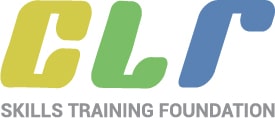Access to mobile phones has rapidly increased over the past few years in the South Asia region. Mobile phone penetration is considered to be high in all six countries and it is not uncommon for people to have more than one mobile connection. Conversely, there is also significant evidence to show that individuals from lower socio-economic groups may share a single mobile connection with several members of a family or within a small community.This suggests that accurate measurement of mobile phone penetration across large populations is difficult, but it is widely recognized that mobile phone ownership is growing, along with the quality and quantity of services available through the medium.
British Council teams across the region have also used mobile to communicate with trainers and teachers within large scale teacher education projects, both through SMS and more recently
Whats-app groups. A detailed analysis of how much teachers would be willing to pay for specific products linked to their professional development was beyond the scope of this research. However, a variety of models for payment exist – some of which involve direct payment by the end user and others which would enable either government bodies or individual institutions to subscribe to services and content on their teachers’ behalf, with passwords issued for individual access. A related finding in this regard is that the South Asia region is currently a predominantly pre-paid market (although teachers in Sri Lanka reported a high number of post-paid connections), which means the ability to bill for Value Added Service has a high rate of failure given
low account balances. In any case, further research is needed to identify the degree to which teachers would be willing to invest financially in professional development through digital (or other)
media.
appear to have access to a shared mobile phone within their family. There is some use of smartphones among the group surveyed – across the region, 55 per cent of the teachers
reported using either a touch or touchand-type handset. While variation between private and government sector teachers does not appear to be high, there are some country level differences.
Teachers surveyed in Nepal and Pakistan report the highest levels of smartphone usage (65 and 50 per cent respectively), while Sri Lanka reports the lowest level at 48 per cent. Of 815 respondents, just under 80 percent claimed to know the cost of their mobile phone, averaging to approximately 80 GBP (ranging from around 56 GBP in Afghanistan and Pakistan to 110 GBP in Bangladesh). In all countries, these averages are well above the low-end price point.
Connection type
In line with industry reports, 77 per cent of the teachers surveyed indicated that they are on a pre-paid connection. This rose to 95 per cent for teachers from Bangladesh but dropped to 59 per cent in Sri Lanka. This may have some implications for how they can access subscriber-based services, and whether their phones are fully operational all the time.Use of mobile internet Fifty-five per cent of respondents report having access to the internet on their mobile phones (ranging from 46 per cent in Bangladesh to 74 per cent in Nepal). With the exception of Bangladesh, where just 33 per cent of government sector teachers reported mobile internet usage, there did not appear to be large differences between access for teachers working in the government versus private sectors.
Fifty-six per cent of the teachers surveyed report that they use their mobiles for social media, and in the focus group discussions it was clear that teachers use mobiles for engaging with
social media more than personal computers. Here there were some differences between teachers from private schools and those from the government sector. Only teachers from Afghanistan
showed a reverse trend, with more government school teachers than private using social media on their phones.It is interesting to note that teachers in Nepal report the highest levels of engagement with their mobiles, for example with 77 per cent of teachers reporting that they access Facebook on their phones, compared to a regional average of just 48 per cent. Similarly, 66
per cent of the Nepalese teachers surveyed use their phones for email against a regional average of 50 percent. As discussed above, an in-depth examination of willingness to pay for content was not conducted as part of this survey however, it is worth highlighting that while app usage is high, only 13 per cent of the teachers surveyed report ever paying for content via an app store. This
has some implications for how they might be prepared to consume content for professional development purposes, although it is possible that this habit may increase over time as more
contextualized and relevant content becomes available for this audience.
Use of educational mobile applications
Thirty-six per cent of the respondents report that they have downloaded educational mobile apps. Of those who have, the majority were downloaded for their own learning (74 per cent) but more than half of this group reported that they also use them in the classroom. The word cloud below shows the type of responses given when asked which types of educational apps are downloaded, with the larger words indicating a greater number of mentions. English is the most popular category but this should not be surprising given that the respondents are
all English teachers and they are aware that the survey is being conducted to find out about their use of technology in relation to their teaching of the language.Overall, the teachers demonstrated an awareness of the value of mobile phones in terms of providing greater access to information than they have had previously.The percentage of teachers with smartphones currently able to access mobile internet is substantial, and will increase assuming current trends continue. The rate at which English teachers change their phones also seems to be high and increasing, with the possible exception of Bangladesh where 91 per cent of the teachers surveyed had owned the same mobile phone for more than seven years. However, aspiration is high across the region,during the focus group discussions,teachers indicated they want to have the best phone they can afford at any given point in time and that they are eager to keep pace with advances in the technology.
Insights from the focus groups also indicated that the teachers are more familiar and comfortable with using their mobiles over personal computers and that they believe mobile can be an
effective channel for CPD, alongside providing a platform for collaboration and the development of teaching communities (e.g. through social media). This interest in linking up and sharing
with other teaching professionals was one of the key findings of interest from the research.
Content Courtesy: British Council (information on public domain)






